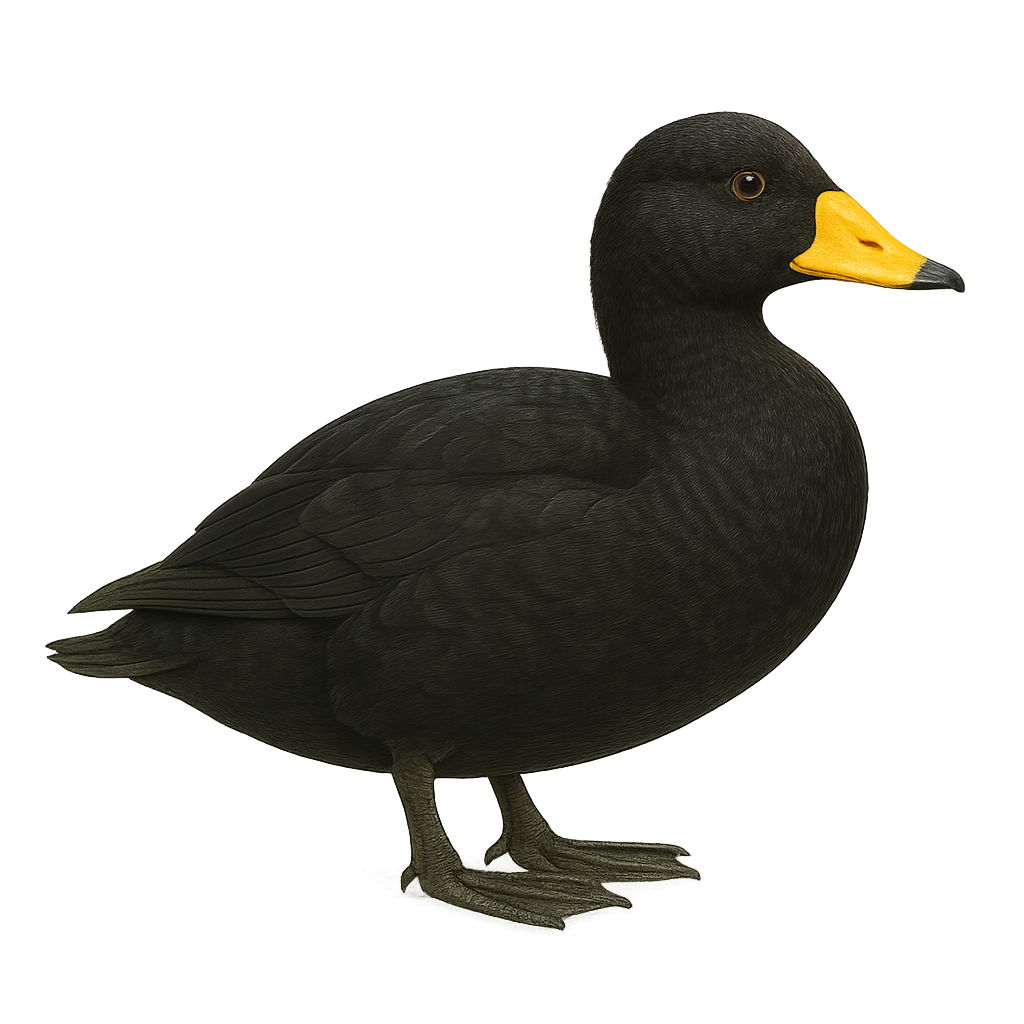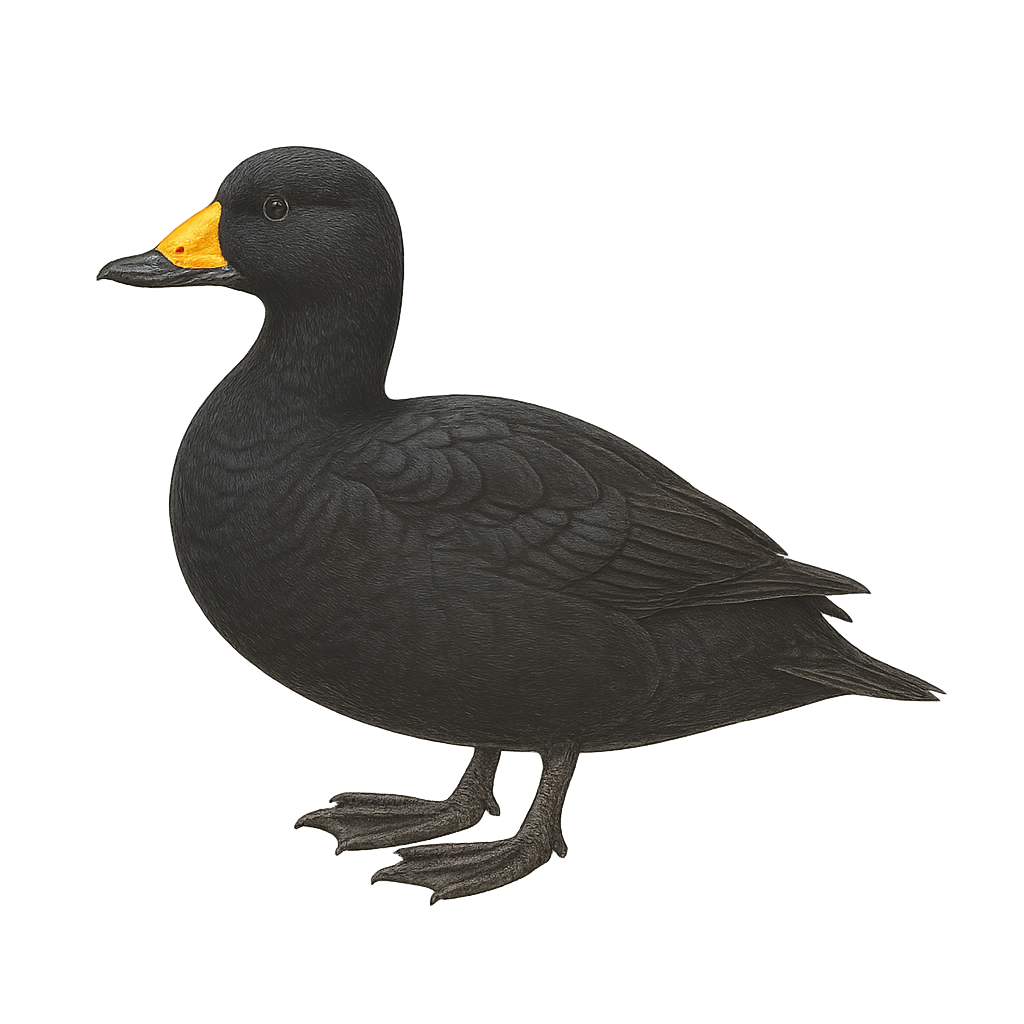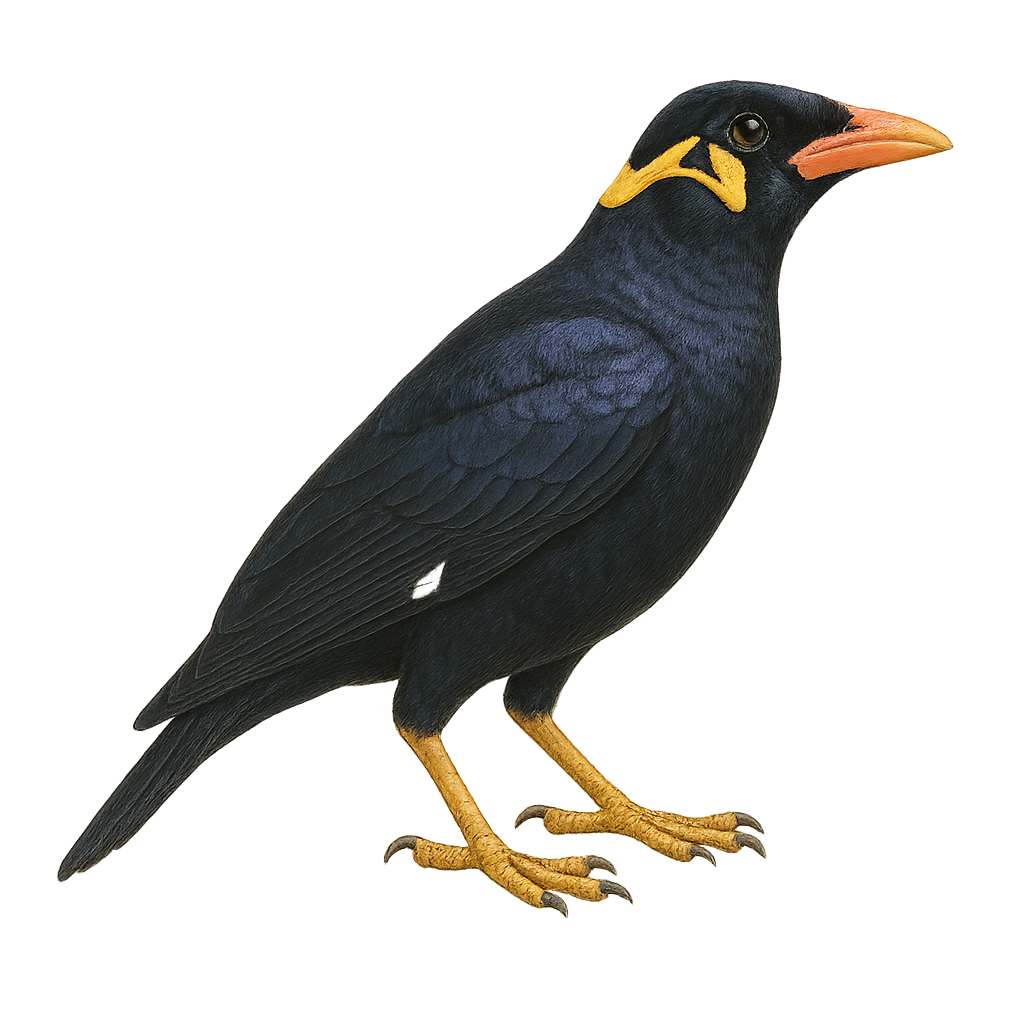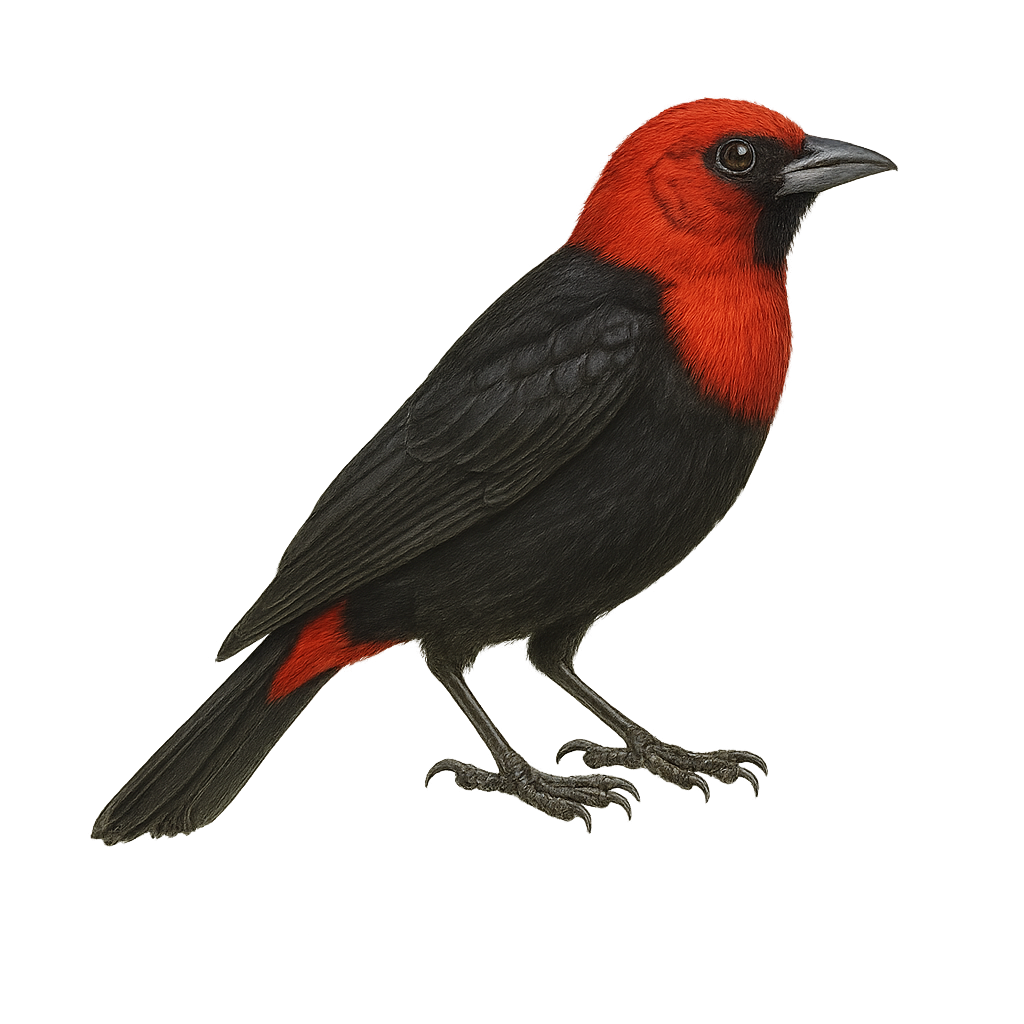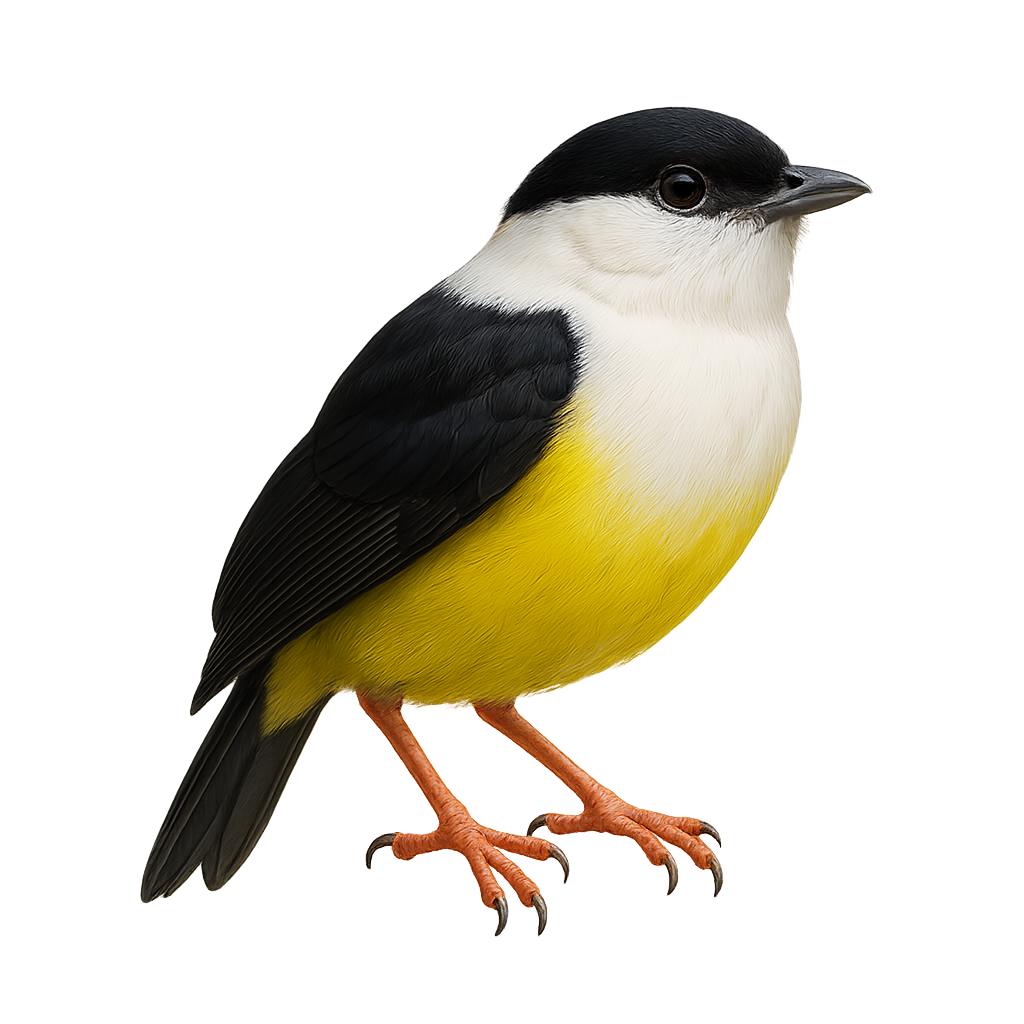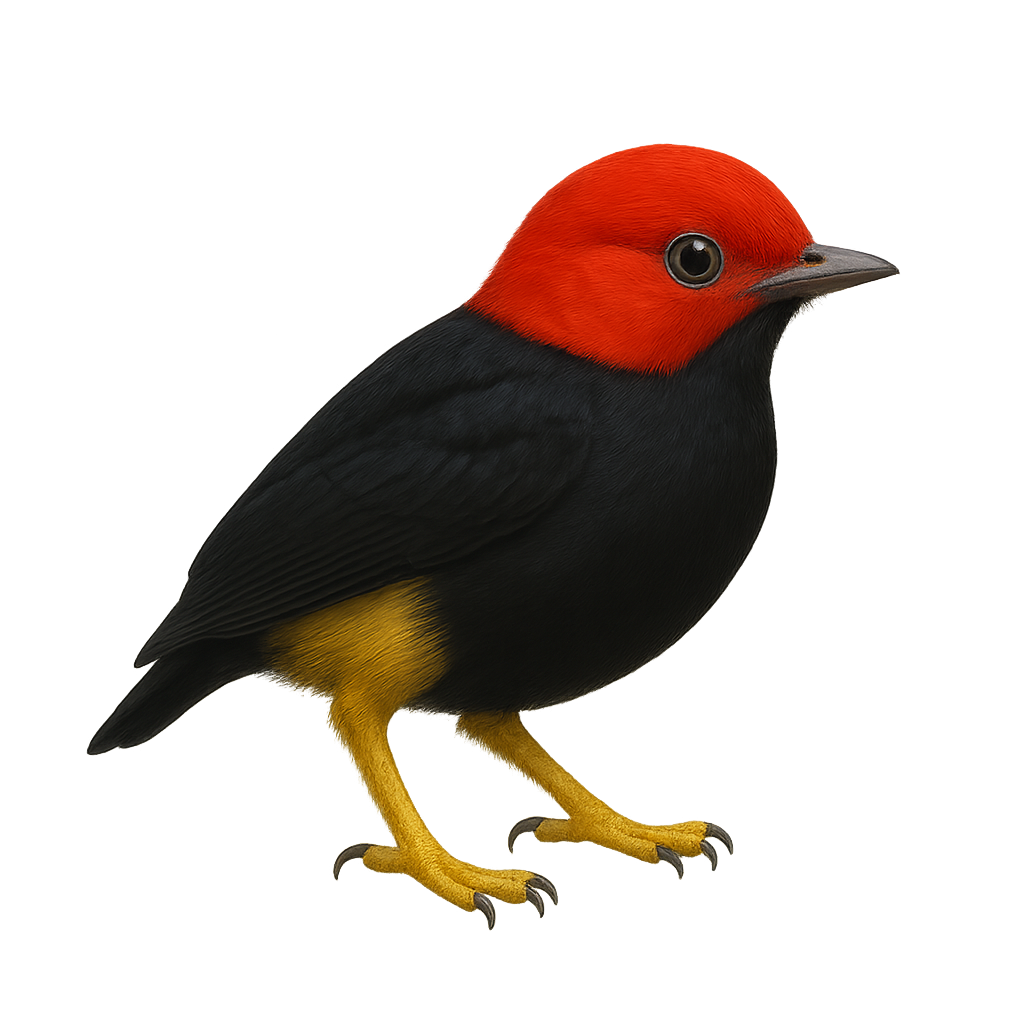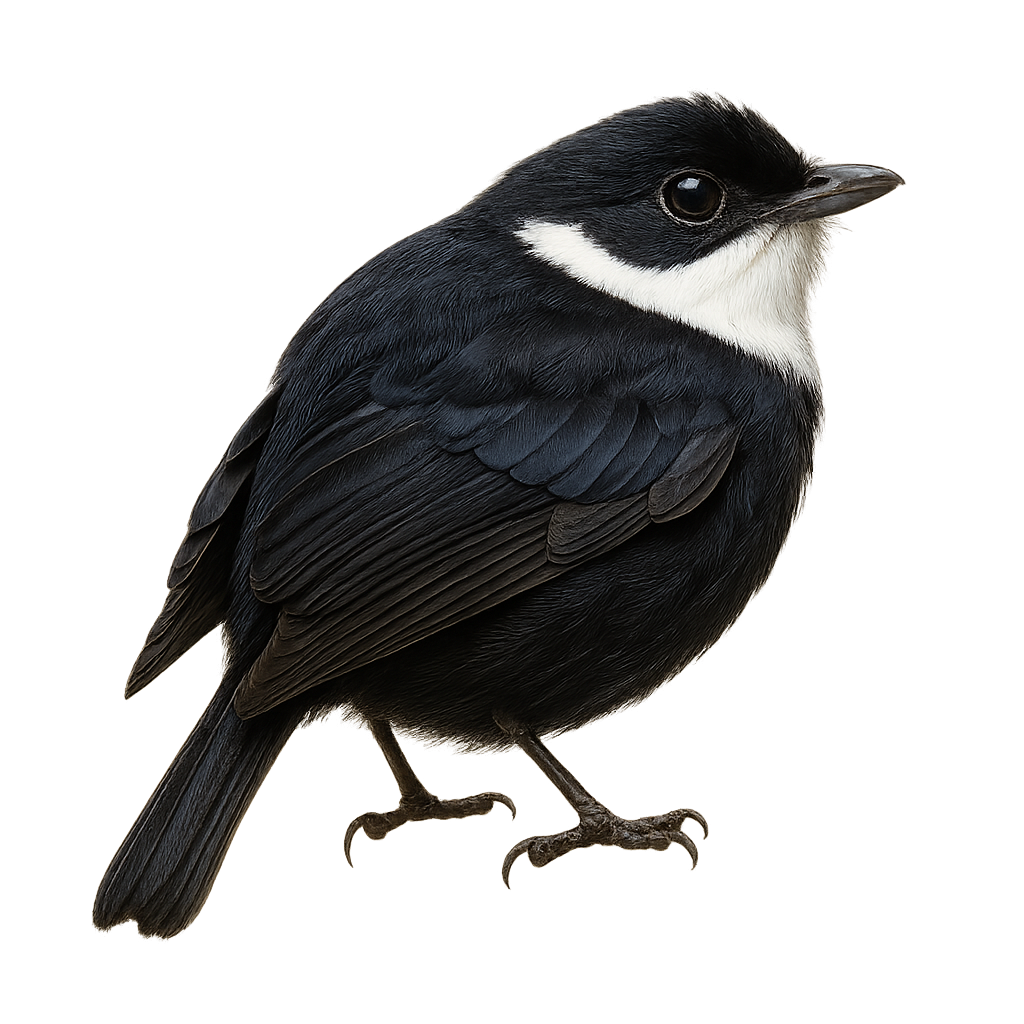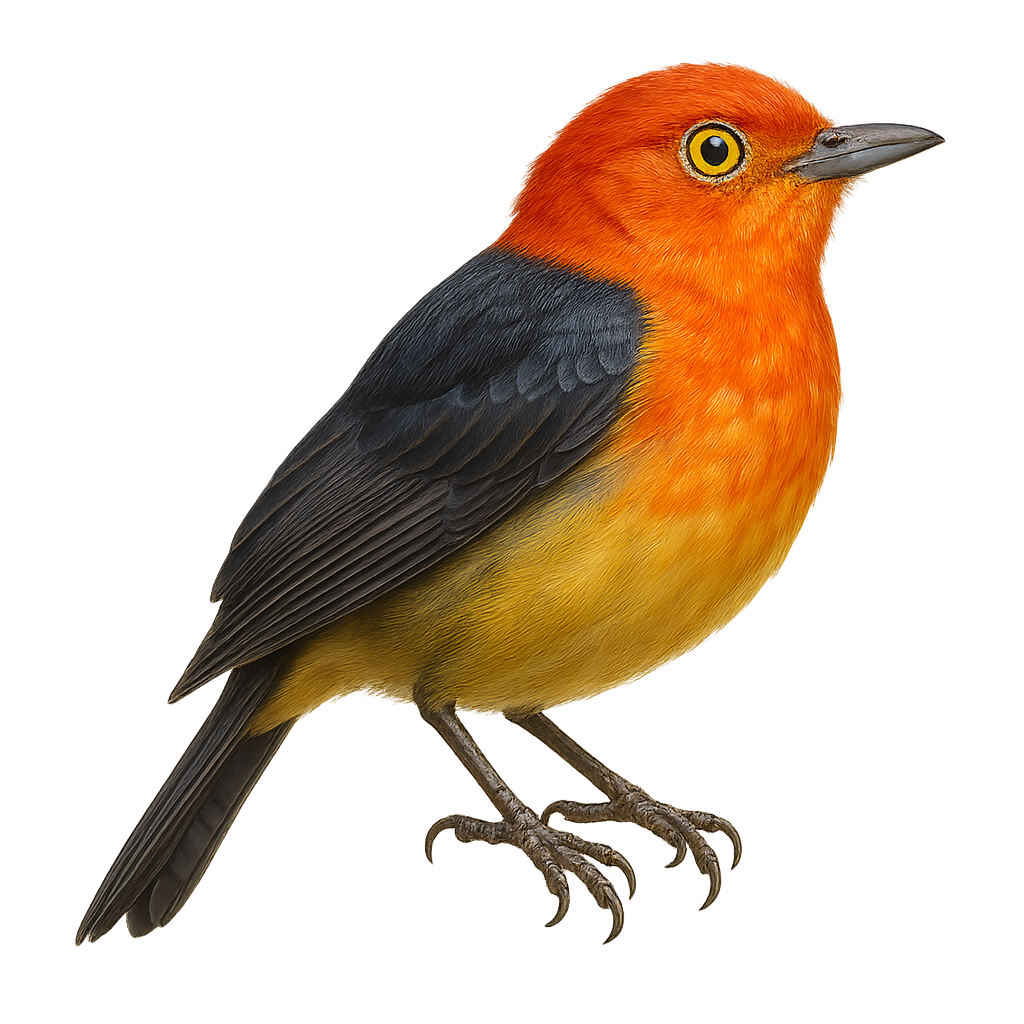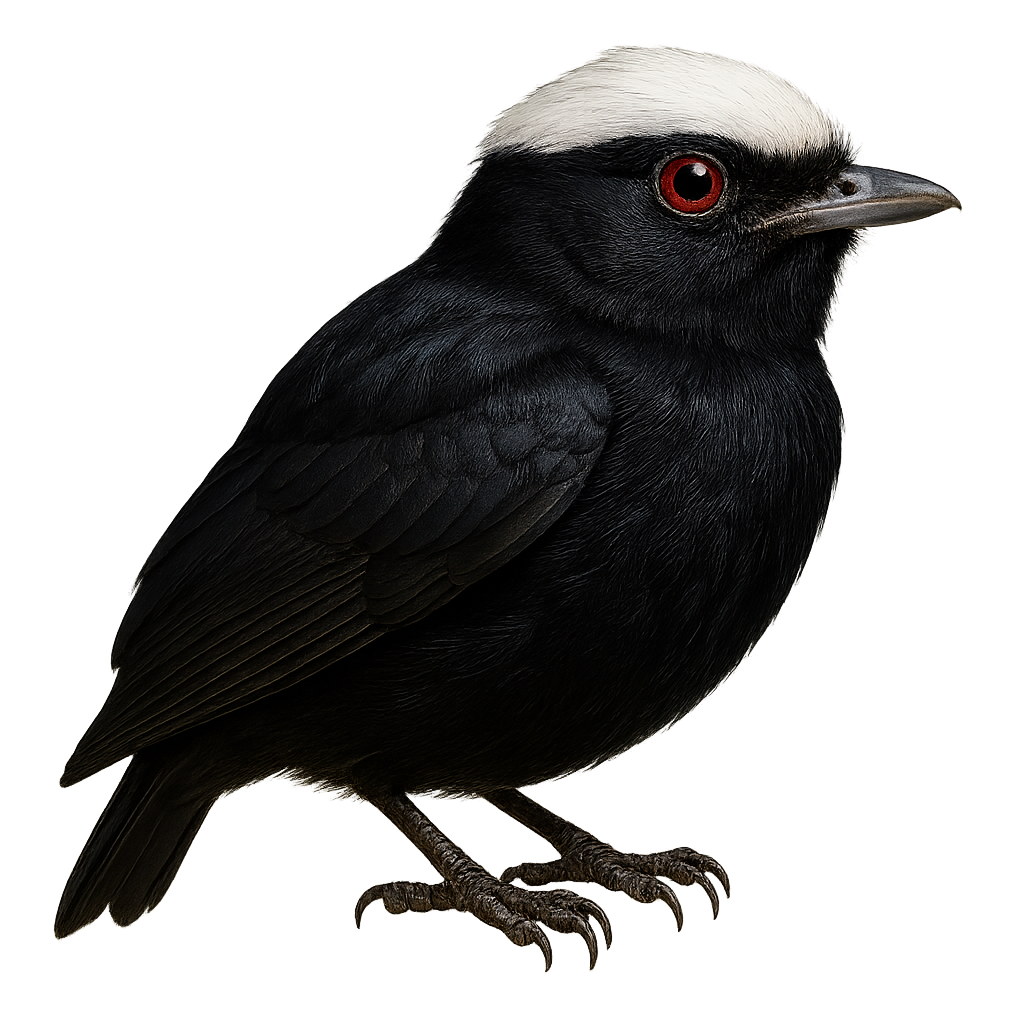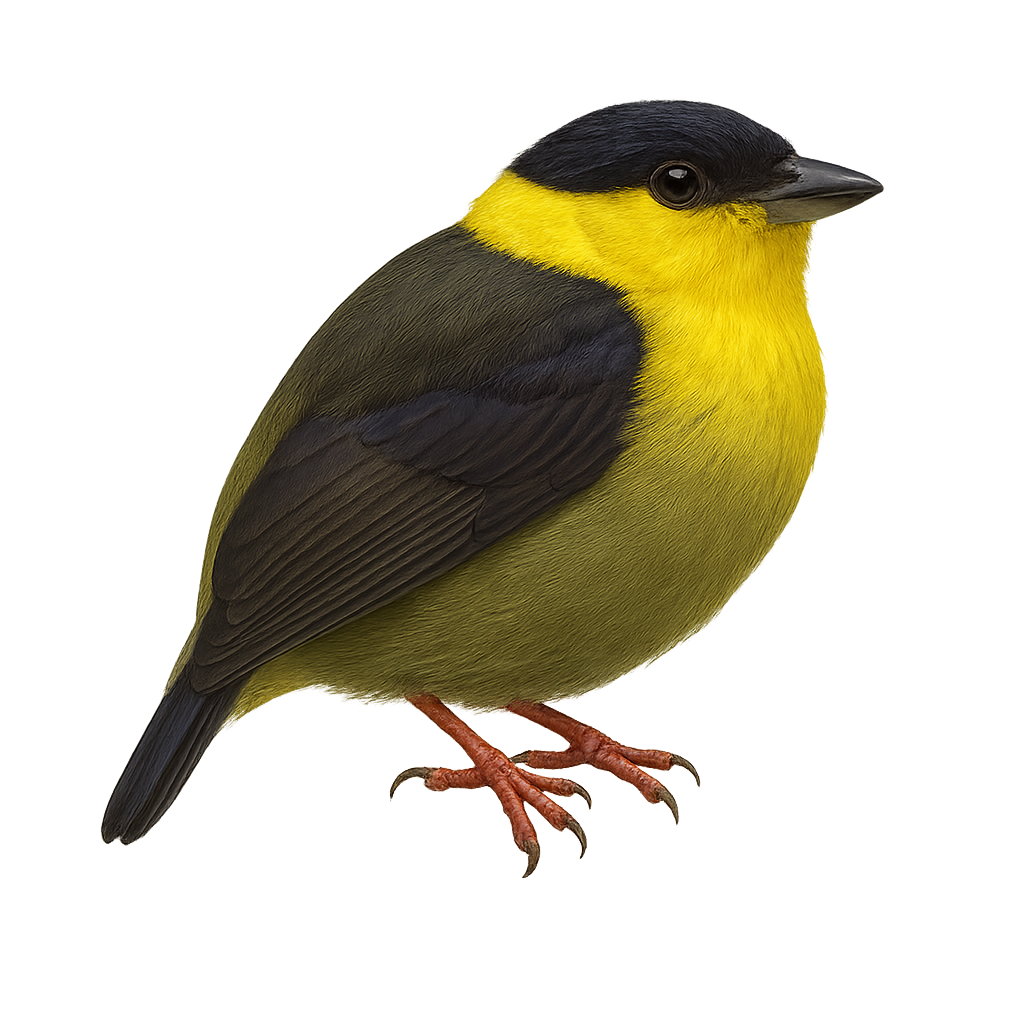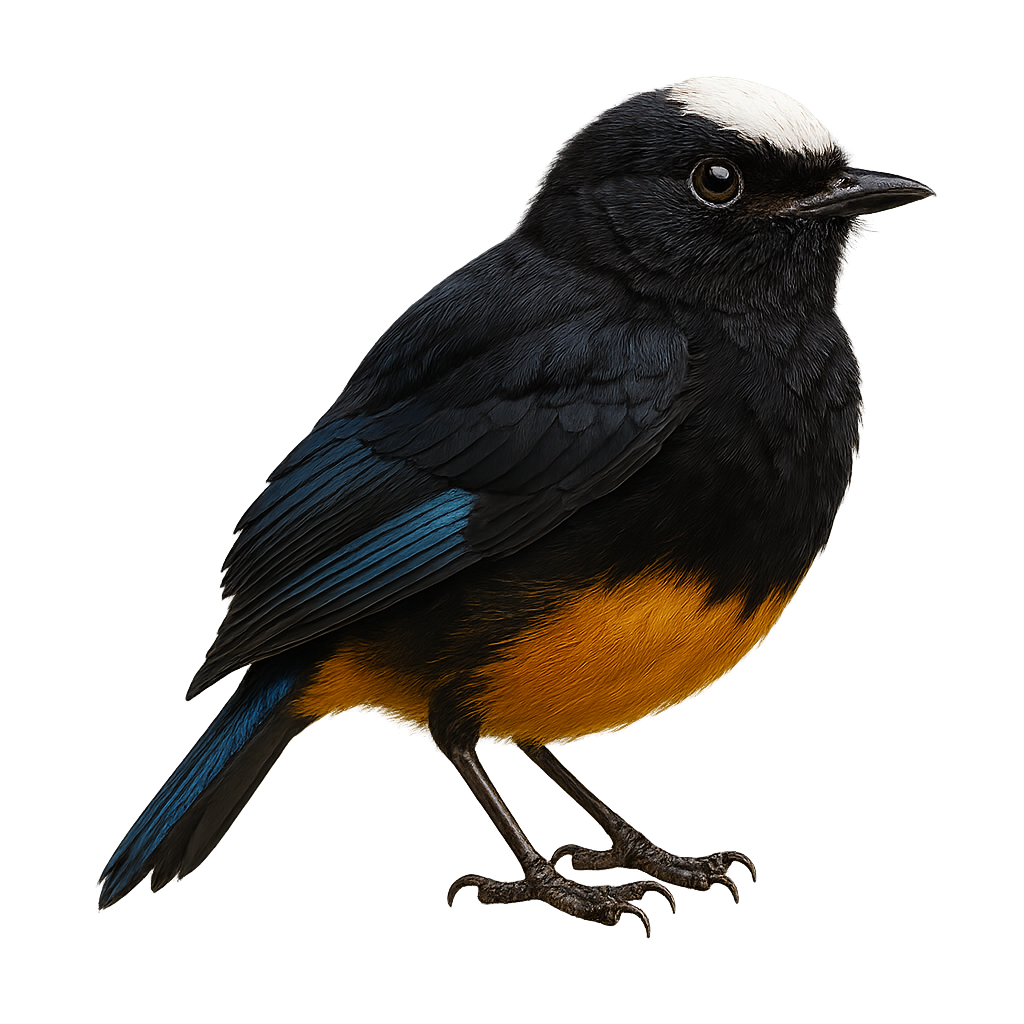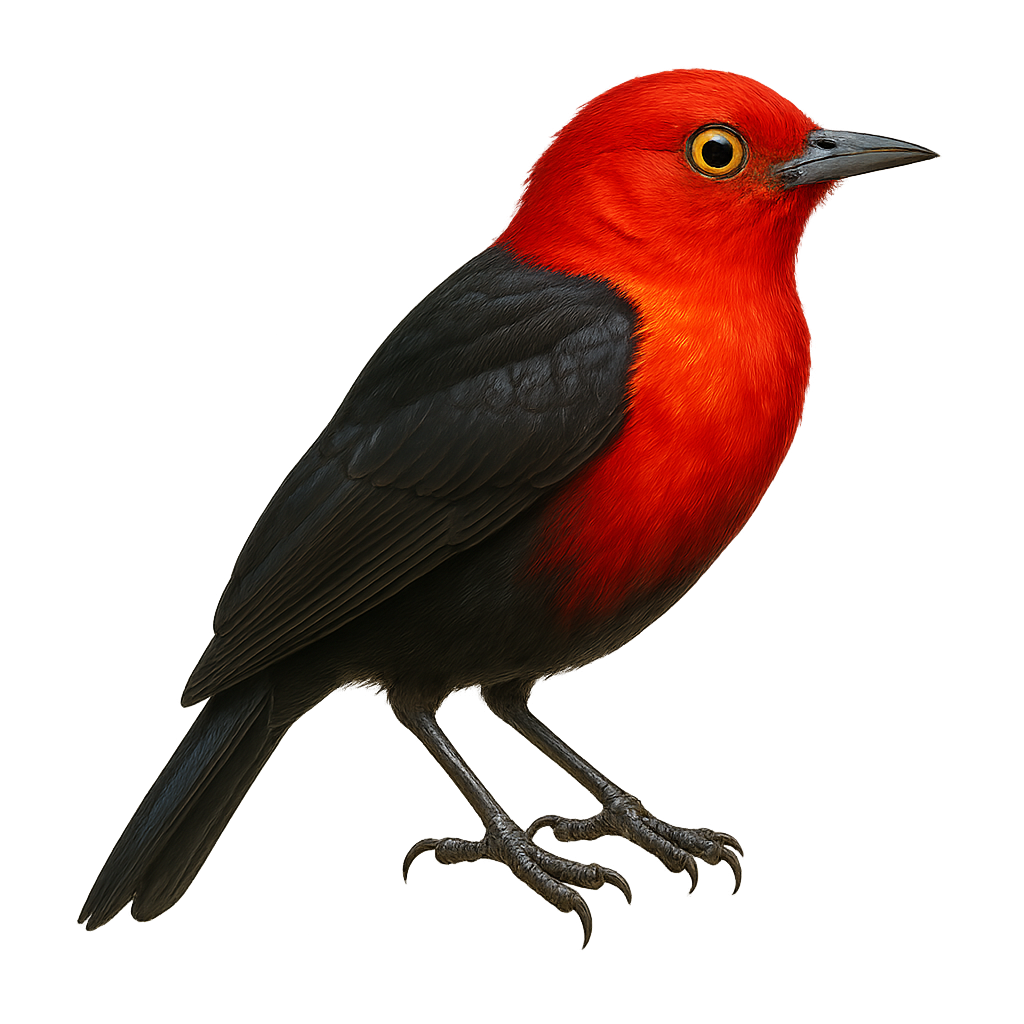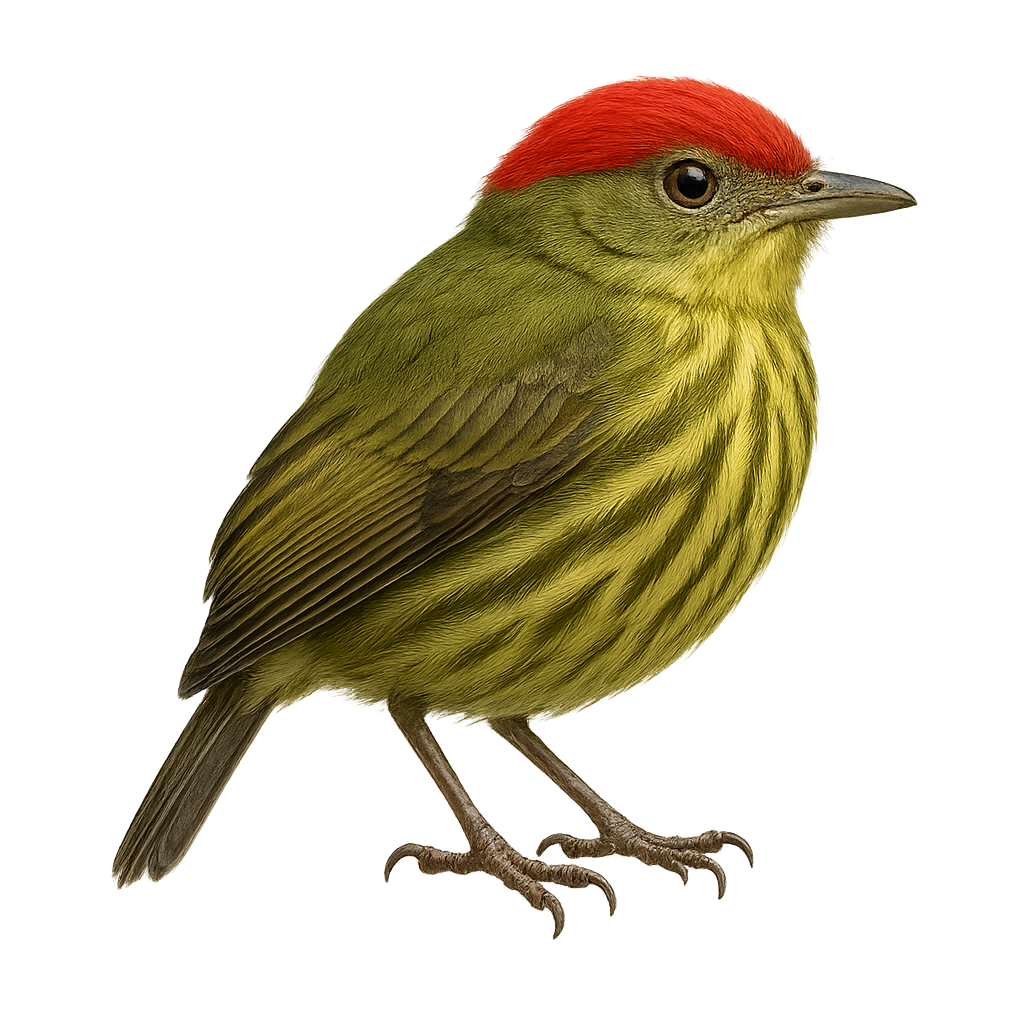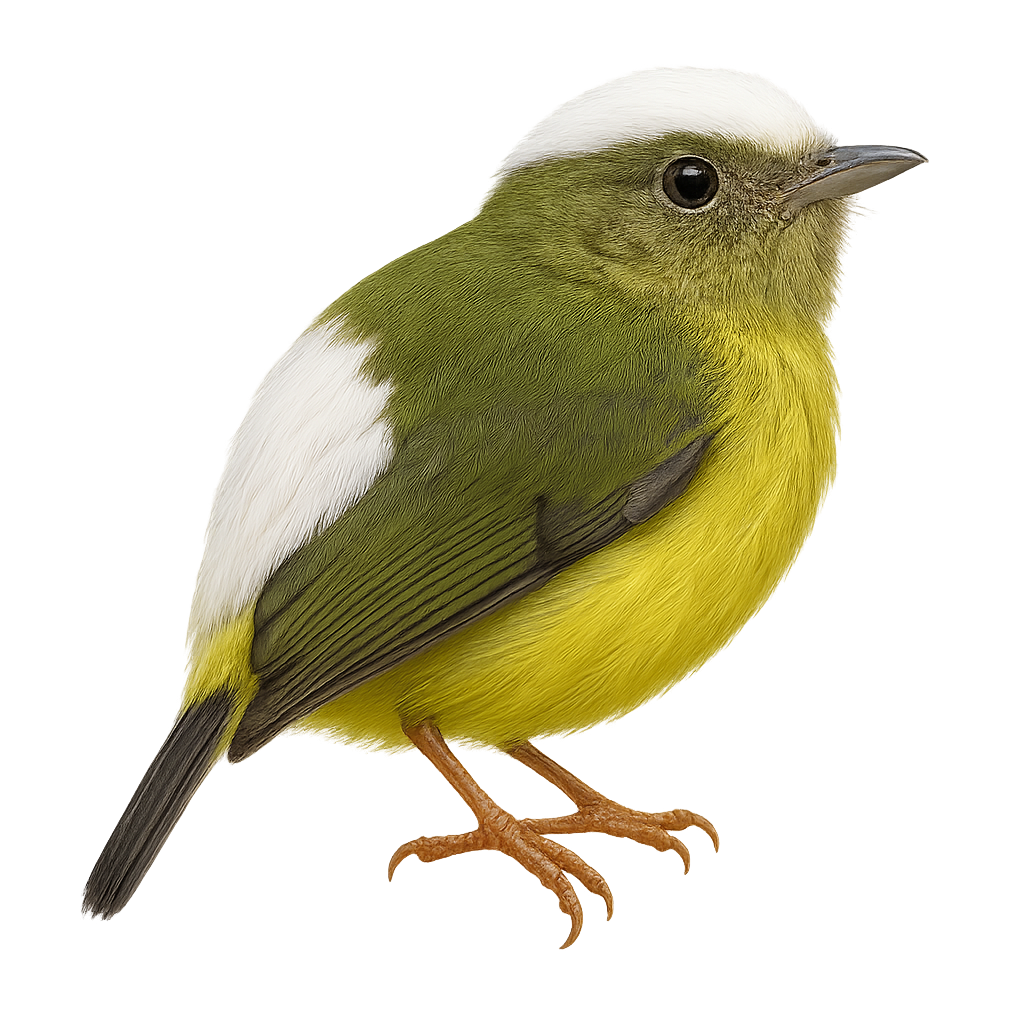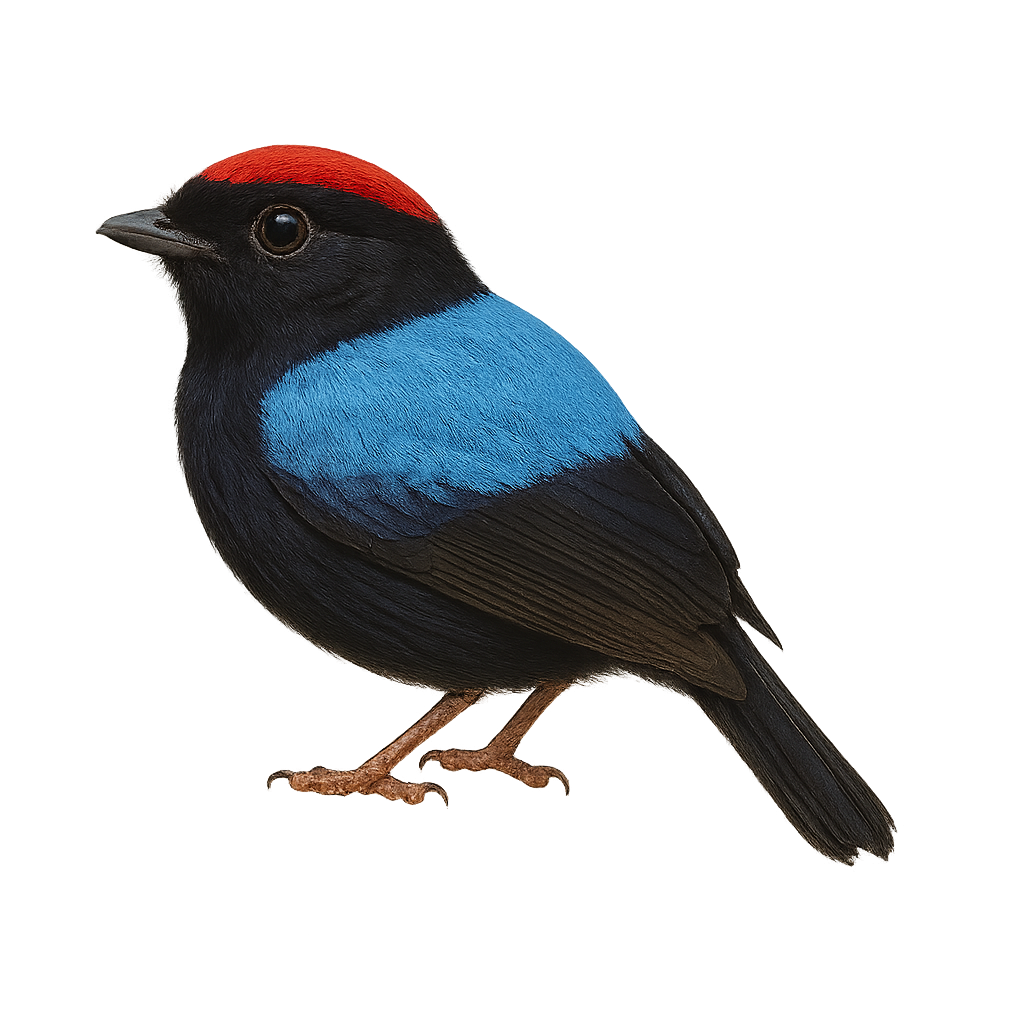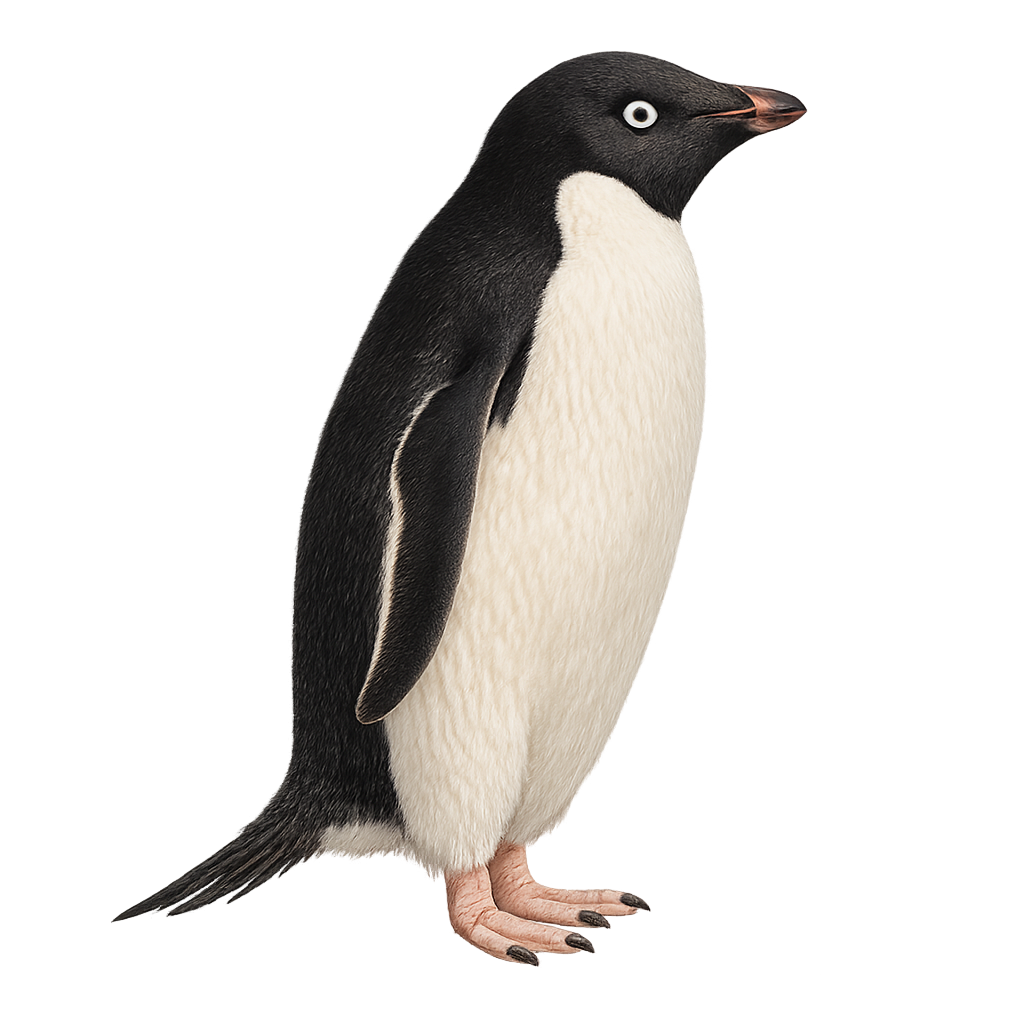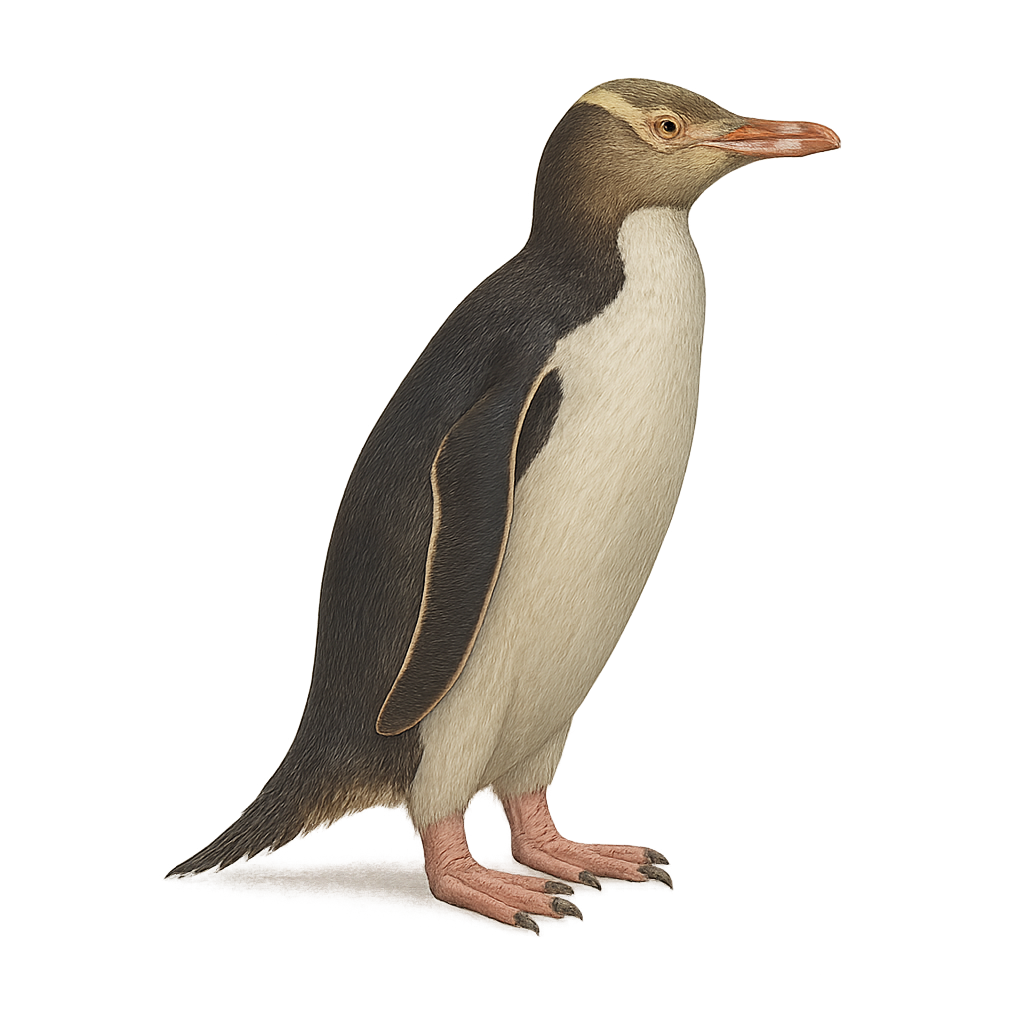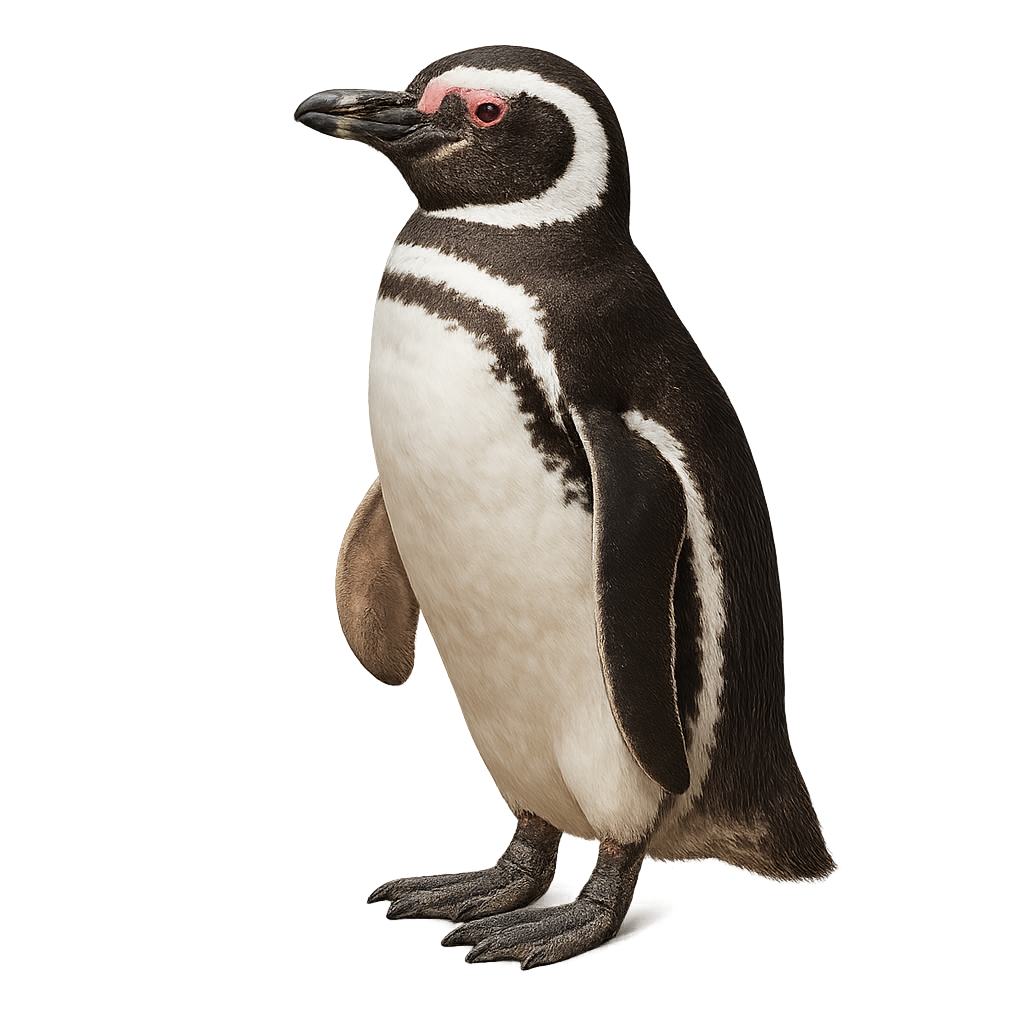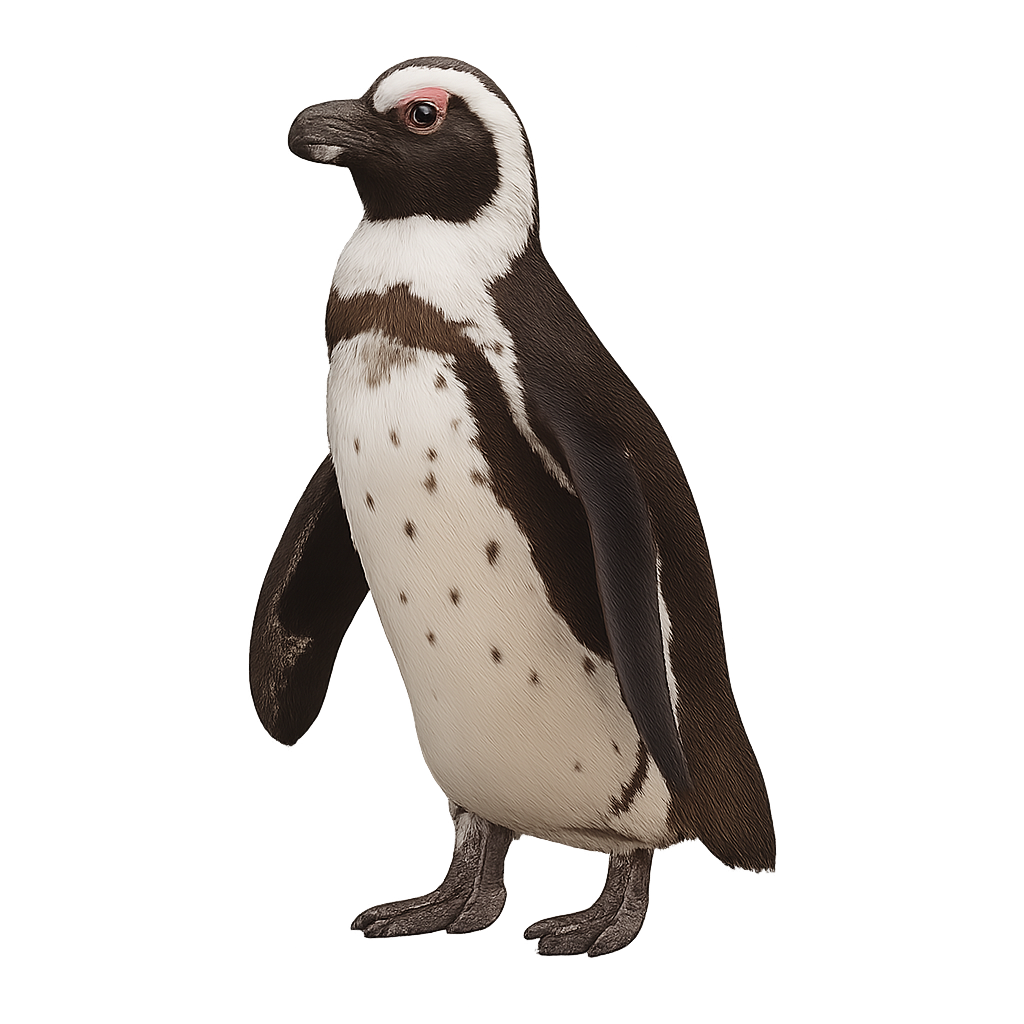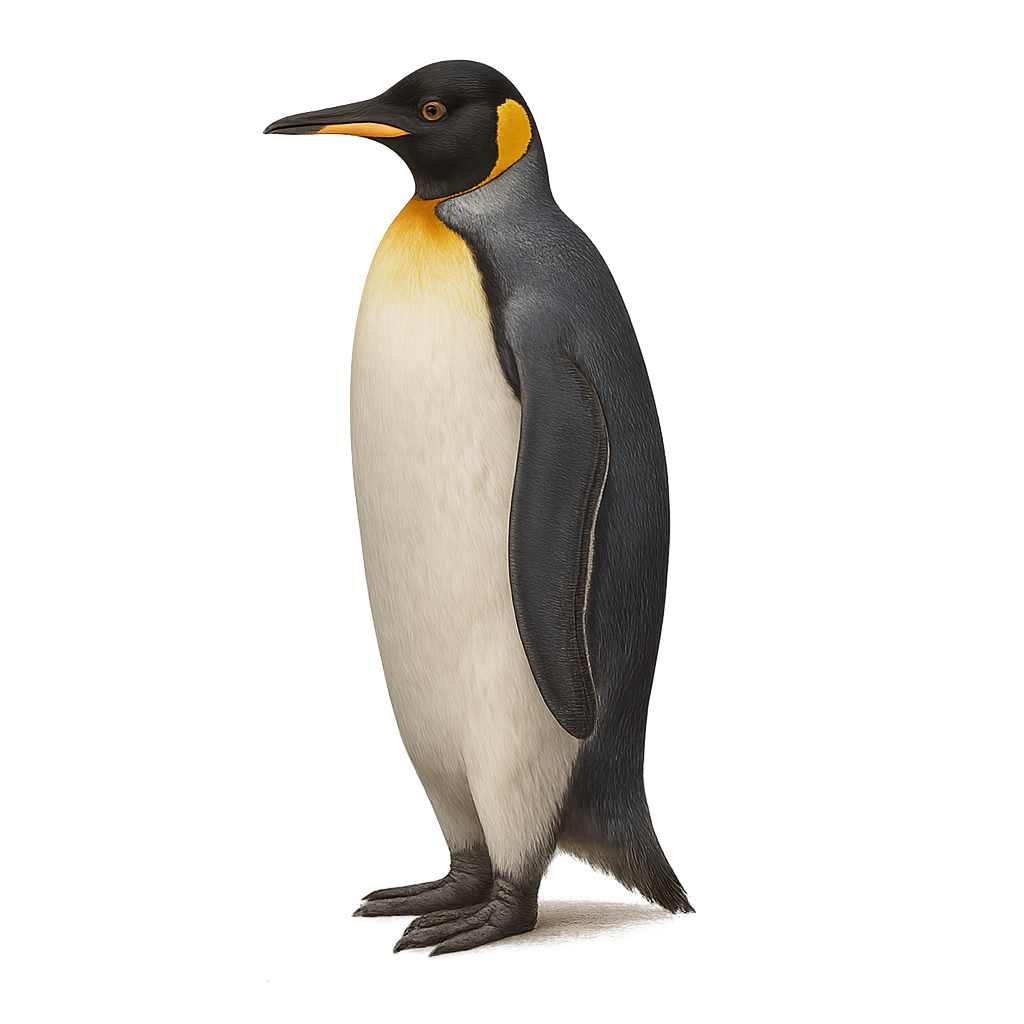The Black Scoter, Melanitta americana, is a robust and elegant sea duck, recognizable by its black plumage in males and brown in females. The male features a bright orange bill with a distinctive black knob at the base, while the female has a duller plumage with shades of brown and gray. These birds are primarily found along the North American coasts, where they feed on mollusks, crustaceans, and small fish. They are often seen in large groups, floating on the water or diving for food. Their breeding habitat is in the Arctic and subarctic regions, where they nest near lakes and rivers.
The Surf Scoter, Melanitta perspicillata, is a medium-sized diving duck, easily identifiable by its black plumage and distinctive white forehead in males. Females have a more subdued brown plumage. This duck primarily feeds on mollusks, crustaceans, and small fish, which it captures by diving underwater. It is mainly found along the North American coasts but migrates southward in winter. The Surf Scoter is often seen in large flocks, making it a spectacular sight in flight. Although relatively common, it is sometimes threatened by marine pollution and habitat loss.
The common scoter is a medium-sized diving duck, easily identified by the male's uniform black plumage and the female's dark brown feathers. It primarily inhabits coastal areas and large freshwater bodies. During the breeding season, it is found in northern regions, particularly in Scandinavia and Russia. Its diet mainly consists of mollusks, crustaceans, and small fish, which it catches by diving. The common scoter is a migratory bird, wintering in the milder waters of Western Europe. It is often seen in large flocks, forming rafts on the water.
The Common Hill Myna, Gracula religiosa, is a remarkable bird known for its ability to mimic sounds and human speech. Native to the tropical forests of Southeast Asia, it is easily recognizable by its glossy black plumage, white wing patches, and bright yellow wattles behind the eyes. This sociable bird lives in groups and primarily feeds on fruits, nectar, and insects. It is often seen in humid forests, mangroves, and plantations. Although popular as a pet due to its vocal talents, preserving its natural habitat is crucial for its long-term survival.
The Red-shouldered Malimbe, scientifically known as Malimbus scutatus, is a bird from the Ploceidae family, predominantly found in the humid tropical forests of West Africa. This bird is notable for its glossy black plumage and striking red shoulders, giving it an elegant appearance. It is often seen in small groups, feeding mainly on insects and fruits. Its song is melodious, consisting of whistles and trills. Although its habitat is threatened by deforestation, it remains relatively common in protected areas.
The Club-winged Manakin, scientifically known as Machaeropterus deliciosus, is a small bird native to the humid tropical forests of South America. The male is particularly notable for its vibrant plumage and unique courtship display, where it produces a violin-like sound by rapidly rubbing its modified wing feathers together. This fascinating behavior is rare among birds. They inhabit dense undergrowth, feeding primarily on fruits and insects. Although their habitat is threatened by deforestation, they remain relatively common in protected areas. Socially, these birds are intriguing, with males often solitary except during the breeding season.
The White-collared Manakin, Manacus candei, is a small, colorful bird native to the tropical forests of Central America. Known for its elaborate courtship displays, males perform intricate dances to attract females. The male features striking black plumage with a distinctive white collar, while the female is primarily green. These birds inhabit dense undergrowth and feed on fruits and insects. Their range extends from southern Mexico to Panama. Although their population is stable, deforestation poses a potential threat to their natural habitat.
The Orange-collared Manakin, or Manacus aurantiacus, is a small, vibrant bird found in the tropical rainforests of Central America. Males are particularly striking with their bright orange head and neck contrasting against a black body, while females display more subdued olive-green tones. These birds are famous for their elaborate courtship displays, where males perform intricate dances to attract females. They primarily inhabit dense undergrowth, feeding on fruits and insects. Although their habitat is threatened by deforestation, they remain relatively common within their range.
The Red-capped Manakin, Pipra mentalis, is a small, brightly colored bird found in the tropical forests of Central America. Males are particularly recognizable by their vivid red heads contrasting with their black bodies, while females have more subdued green plumage. These birds are famous for their spectacular courtship displays, where males perform complex dances to attract females. They primarily inhabit the understory of humid forests, feeding on fruits and insects. Although relatively common within their range, their habitat is threatened by deforestation. They are generally suspicious, making observation challenging.
The White-ruffed Manakin, Corapipo altera, is a small bird from the Pipridae family, primarily found in the humid forests of Central America. This manakin is recognizable by its distinctive black and white plumage, with a white collar around its neck. Males are known for their spectacular courtship displays, performing complex dances to attract females. These birds typically live in small groups and feed mainly on fruits and insects. Their preferred habitat includes dense undergrowth where they can move quickly and discreetly. Although their population is stable, deforestation poses a potential threat to their natural habitat.
The Band-tailed Manakin, Pipra fasciicauda, is a small, colorful bird found in the tropical forests of South America. It is identifiable by its vibrant plumage, featuring shades of red, yellow, and black, and its distinctively barred tail. Males are particularly noted for their spectacular courtship displays, performing intricate dances to attract females. These birds primarily inhabit dense undergrowth, feeding on fruits and insects. Their range extends from southern Amazonia to northern Argentina. Although their population is stable, deforestation poses a potential threat to their natural habitat.
The White-crowned Manakin, or Pseudopipra pipra, is a small, colorful bird native to the tropical forests of South America. It is easily identifiable by its white head contrasting with its black body. Males are particularly known for their spectacular courtship displays, performing complex dances to attract females. These birds primarily inhabit the understory of humid forests, where they feed on fruits and insects. Although often difficult to spot due to their small size and discreet behavior, they play an important role in seed dispersal in their habitat. Their song is a distinctive feature of the forest, adding an auditory dimension to their visual presence.
The Golden-collared Manakin, Manacus vitellinus, is a small, brightly colored bird found in the tropical forests of Central America, particularly in Panama and Colombia. Males are easily recognized by their vivid yellow head contrasting with a black and green body, while females are more subdued in olive green tones. This manakin is famous for its spectacular courtship displays, where males perform complex dances to attract females. They are often seen in dense undergrowth, feeding primarily on fruits and insects. Although their habitat is threatened by deforestation, they are currently listed as Least Concern by the IUCN.
The Orange-bellied Manakin, or Lepidothrix suavissima, is a small, colorful bird native to the humid tropical forests of South America, particularly in the mountainous regions of Venezuela. This passerine is known for its vibrant plumage, with males displaying bright colors to attract females during the breeding season. Females, on the other hand, have more subdued, often olive-green plumage, allowing them to blend into the dense foliage. The Orange-bellied Manakin is a diurnal bird, active mainly during the day, and feeds primarily on fruits and insects. It is often seen in small groups, although it can also be solitary. Its courtship dance is a fascinating spectacle, with the male performing complex movements to woo his mate.
The Crimson-hooded Manakin is a small, colorful bird found in the tropical forests of South America. Males are particularly striking with their bright golden heads contrasting against their black bodies, while females have more subdued olive-green plumage. These birds are famous for their elaborate courtship displays, where males perform complex dances to attract females. They primarily inhabit dense undergrowth and feed on fruits and insects. Their range extends from Venezuela to Brazil, including Guyana. Although relatively common, their reliance on primary forests makes them vulnerable to deforestation.
The Eckelberry's Manakin is a small, colorful bird belonging to the Pipridae family. It is primarily found in the lowland humid forests of Peru. This manakin is distinguished by its vibrant plumage, with shades of green, yellow, and red, allowing it to blend into its dense environment. Males are particularly known for their complex courtship displays, which include unique dances and vocalizations to attract females. These birds are generally solitary, except during the breeding season. They primarily feed on fruits and insects, thus contributing to seed dispersal in their habitat. Their song is often an indicator of their presence in the dense forest.
The Wire-tailed Manakin is a small, colorful bird primarily found in the humid tropical forests of South America. It is easily recognizable by its striking plumage: males have a bright red head, a black body, and a long, filamentous tail. Females, on the other hand, are generally green, allowing them to blend into the foliage. These birds are known for their spectacular courtship displays, where males perform intricate dances to attract females. They mainly inhabit the forest canopy, feeding on fruits and insects. Although their habitat is threatened by deforestation, they are not currently considered endangered.
The Snow-capped Manakin is a small, colorful bird primarily found in the tropical rainforests of South America, particularly in Brazil. This passerine is easily recognizable by its striking black plumage contrasted with a bright white cap in males, while females display more subdued olive-green tones. Known for their spectacular courtship displays, males perform intricate dances to attract females. These birds are often seen in small groups and primarily feed on fruits and insects. Their habitat is threatened by deforestation, but they are currently classified as Least Concern by the IUCN.
The Striped Manakin, Machaeropterus striolatus, is a small, colorful bird found in the tropical forests of South America. It is easily recognizable by its vibrant plumage, with distinct stripes on its back and wings. Males display brighter colors than females, with shades of red, green, and black. This manakin is often seen in dense undergrowth, where it primarily feeds on fruits and insects. It is known for its spectacular courtship displays, where males perform complex dances to attract females. Although its habitat is threatened by deforestation, it remains relatively common in some areas.
The Fiery-capped Manakin, or Machaeropterus pyrocephalus, is a small, colorful bird primarily found in the humid forests of South America. It is easily recognizable by its bright red head contrasting with its olive-green body. Males are particularly known for their spectacular courtship displays, performing complex dances to attract females. These birds are generally solitary but can be seen in small groups during the breeding season. Their diet mainly consists of fruits and insects. Although their habitat is threatened by deforestation, they are currently classified as "least concern" by the IUCN.
The Blue-backed Manakin, or Chiroxiphia pareola, is a small bird, measuring about 13 cm in length. It is easily recognizable by its striking plumage: the male sports a bright blue back contrasting with a black head and a red throat, while the female is more subdued with green hues. This bird is mainly found in the humid tropical forests of South America, particularly in Brazil, Guyana, and Venezuela. It is known for its spectacular courtship displays where several males perform synchronized dances to attract females. These displays are often accompanied by melodious songs. The Blue-backed Manakin primarily feeds on fruits and insects, playing an important role in seed dispersal.
The Velvety Manakin, or Lepidothrix velutina, is a small bird belonging to the Pipridae family. It is primarily found in the humid tropical forests of South America, particularly in Colombia and Venezuela. This bird is distinguished by its glossy black plumage in males, while females display more subdued olive-green tones. The Velvety Manakin is known for its spectacular courtship displays, where the male performs complex dances to attract the female. It primarily feeds on fruits and insects, playing a crucial role in seed dispersal. Despite its beauty, it remains relatively discreet and difficult to observe in its natural habitat.
The Adélie Penguin is an iconic bird of Antarctica, easily recognizable by its black and white plumage and elegant demeanor. Standing about 70 cm tall, it is perfectly adapted to life in the extreme conditions of its icy habitat. This penguin primarily feeds on krill, fish, and small crustaceans, which it skillfully captures in the frigid waters. Adélie Penguin colonies are often very dense, with thousands of individuals gathering during the breeding season. They build their nests with stones and typically lay two eggs. Parents take turns incubating the eggs and feeding the chicks. Although their population is currently stable, climate change and decreasing food resources pose potential threats to their future.
The yellow-eyed penguin, native to New Zealand, is easily identified by its striking yellow eyes and the yellow band of feathers around its head. This medium-sized penguin stands about 65 to 70 cm tall and weighs between 5 and 8 kg. It inhabits rocky shores and coastal forests, feeding primarily on fish and squid. Sadly, it is critically endangered due to habitat loss, predation by introduced species, and human disturbance. Conservation efforts are vital for its long-term survival.
The Humboldt penguin is a medium-sized penguin (56–70 cm, 2.9–6 kg) with dark grey upperparts, a white belly, and a black head bordered by a white band around the eye. It is endemic to the Pacific coast of South America (Peru and Chile), nesting in guano burrows, rocky crevices, and coastal caves. Social, it forms small colonies on islands and coastal cliffs.
The Magellanic Penguin, Spheniscus magellanicus, is a species of penguin found primarily along the coasts of South America, particularly in Argentina, Chile, and the Falkland Islands. This medium-sized penguin stands about 70 cm tall and weighs between 3 and 6 kg. It is easily recognizable by its black and white plumage, with two distinctive black bands around its neck and chest. Magellanic Penguins are marine birds that primarily feed on fish and crustaceans. They are known for their long annual migrations, sometimes traveling thousands of kilometers to find breeding and feeding grounds. Although they are socially tolerant, they can be aggressive when defending their nests.
The African penguin, also known as the Jackass penguin, is a species of penguin found along the southwestern coast of Africa, primarily in South Africa and Namibia. It is easily recognizable by its black-and-white plumage and the large pink band around its eyes. This penguin is an excellent swimmer, feeding mainly on fish and crustaceans. While it is an iconic species of the region, it is endangered due to habitat loss, pollution, and overfishing.
The emperor penguin is the largest penguin species, standing 1.1–1.3 m tall and weighing 22–45 kg, with striking black-and-white plumage, a pale yellow breast and orange patches at the bill’s base. Endemic to Antarctica, it breeds on sea ice during the austral winter, forming vast colonies to shelter from cold and marine predators. Following courtship displays in April–May, the female lays a single egg which she transfers to the male for incubation before returning to sea to feed.
The Little Blue Penguin, also known as the Fairy Penguin, is the smallest of the penguin species, measuring about 30 to 40 cm in height and weighing between 1 and 1.5 kg. It has a distinctive blue-gray plumage on its back and wings, with a white belly. Its beak is short and dark, and its feet are pink or gray. The Little Blue Penguin primarily lives along the coasts of New Zealand and Australia, inhabiting colonies on beaches, islands, and cliffs. Unlike other penguins, the Little Blue Penguin is capable of swimming at impressive speeds, allowing it to hunt fish, crustaceans, and squid underwater. Although it is an excellent swimmer, it also spends time on land, where it digs burrows or hides in shrubs to protect itself from predators. While its population remains relatively stable, it faces threats such as climate change, predation by introduced animals, and habitat disruption.
The King penguin is the second largest species of penguin, after the emperor penguin. It primarily lives on subantarctic islands and the coasts of Antarctica. This penguin is easily recognizable by its distinctive black and white plumage and its bright orange coloring on the sides of the head and neck. It primarily feeds on fish, krill, and squid, which it captures by diving into the water. The King penguin is a social species, living in dense colonies, and is known for its spectacular courtship displays.


